#Artificial Intelligence in Retail
Explore tagged Tumblr posts
Text

Meet Flora AI – Your Smart Cannabis Shopping Assistant
Meet Flora AI, our amazing AI assistant, specifically designed to make personalized product recommendations to consumers of cannabis and CBD products, making their transactions easier and more effective. Flora AI also supports your employees by relieving them from the burden of being the only product expert in the room. Try a free demo at Genetica and see for yourself.
#artificial intelligence platform#retail ai#artificial intelligence in retail#flora ai#ai#cannabis ai#ai in retail#cannabis retail
2 notes
·
View notes
Text

AI in Retail industry: Use Cases and Examples
AI in the retail industry is transforming the way businesses operate, enhancing customer experiences and optimizing inventory management. From personalized recommendations and virtual assistants to AI-powered demand forecasting, artificial intelligence is revolutionizing retail. It helps improve sales, reduce costs, and streamline operations. AI solutions like smart chatbots and data-driven insights boost customer satisfaction and business growth. USM Business Systems is the best mobile app development company to deliver cutting-edge AI solutions tailored for the retail industry.
#AI in retail#Retail industry AI solutions#Artificial intelligence in retail#AI for retail businesses#AI-powered retail technology#Smart retail AI solutions#AI in retail operations#AI-driven retail innovations#AI for retail growth#Role of AI in retail industry
0 notes
Text
Enhancing Retail Success with Conversational AI Consulting and Footfall Analytics
In the competitive landscape of retail, understanding customer behavior is crucial to staying ahead. Retailers are increasingly turning to advanced technologies like Conversational AI and Footfall Analytics to gain deep insights into their customers' needs and preferences. When combined, these tools not only improve customer engagement but also optimize store operations and drive revenue growth.
The Power of Conversational AI in Retail
Conversational AI refers to the technology that enables machines to interact with humans through natural language, whether via text or voice. In the retail context, this can take the form of chatbots, virtual assistants, or voice-activated systems that provide real-time assistance to customers. From answering product queries to guiding users through the purchasing process, Conversational AI helps retailers deliver personalized, efficient, and consistent customer service.
Moreover, by leveraging machine learning, these systems can continuously improve their responses, leading to more accurate and relevant interactions over time. This not only enhances customer satisfaction but also frees up human staff to focus on more complex tasks that require a personal touch.
Understanding Footfall Analytics
Footfall Analytics involves the collection and analysis of data related to the number of people entering and moving through a physical space, such as a retail store. This data provides valuable insights into customer behavior, including peak shopping times, popular store sections, and the effectiveness of marketing displays.
By understanding these patterns, retailers can make informed decisions about staffing, store layout, inventory management, and promotional strategies. For instance, if Footfall Analytics reveals that certain areas of the store attract more customers, businesses can strategically place high-margin products in those areas to maximize sales.
The Synergy Between Conversational AI and Footfall Analytics
When Conversational AI is integrated with Footfall Analytics, the potential for retail optimization grows exponentially. Here’s how these technologies work together:
Personalized In-Store Experiences: Conversational AI can use Footfall Analytics data to offer personalized recommendations or promotions to customers based on where they are in the store. For example, if a customer frequently visits the electronics section, the AI could suggest the latest gadgets or offer discounts on similar products.
Enhanced Customer Insights: By analyzing conversations alongside footfall data, retailers can gain a more holistic view of customer preferences. This enables them to tailor their offerings and marketing strategies to better meet the needs of their target audience.
Optimized Store Operations: Footfall Analytics helps retailers understand traffic patterns, while Conversational AI can be used to manage customer flow during peak times. For instance, a chatbot could direct customers to less crowded areas of the store or provide information on wait times for assistance.
Data-Driven Decision Making: The integration of these technologies provides retailers with a wealth of data that can inform everything from product placement to staff scheduling. This data-driven approach leads to more efficient operations and better customer experiences.
The Role of Conversational AI Consulting
Implementing Conversational AI and Retail Footfall Analytics requires expertise in both technology and retail strategy. This is where Conversational AI consulting comes into play. Consultants help businesses identify the right AI tools, integrate them with existing systems, and develop strategies for leveraging data insights.
A good Artificial Intelligence and Data Analytics consultant will also ensure that the AI system is continually optimized, adapting to changing customer behaviors and preferences. This ongoing support is essential for maintaining a competitive edge in the fast-paced retail environment.
Conclusion
As retail continues to evolve, the combination of Conversational AI Consulting and Footfall Analytics offers a powerful toolset for businesses looking to enhance customer experiences and optimize operations. By partnering with a knowledgeable Conversational AI consultant, retailers can unlock the full potential of these technologies, driving growth and success in a dynamic marketplace.
#retail analytics companies#retail data analytics#AI-powered footfall#AI solution for retail industry#footfall analysis solutions#Retail footfall analysis#retail video analytics#ai in retail industry#artificial intelligence in retail#retail store analytics#store analytics#ai in retail#retail footfall analytics#Customer Analytics through AI#Crowdsense Retail Analytics Solution#Store Footfall Analytics#ai company#conversational ai#artificial intelligence chatbot#conversational ai companies#consulting firms#conversional ai consulting
0 notes
Text
AI Revolutionizing Retail: Smart Solutions for Success
Explore the transformative impact of artificial intelligence in retail, revolutionizing customer experiences, optimizing operations, and driving unprecedented growth in the dynamic world of commerce.
1 note
·
View note
Text
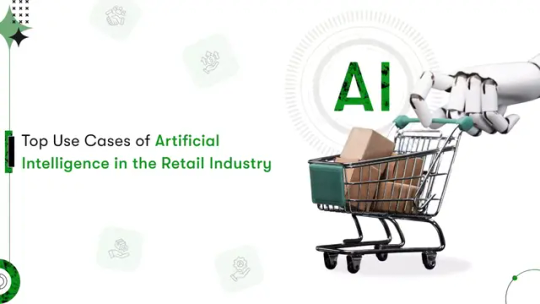
Would you choose to have a telepathy power or a prediction ability to optimize inventory and maximize profits?
If you can’t decide between these two, just choose Artificial Intelligence for your retail business!
You can integrate this one technology across your retail business and get into your customers’ favorite list of brands. How? Find out these amazing use cases of AI in retail that make this a reality for you!
#app development#technology#artificial intelligence#artificial intelligence in retail#retail industry
0 notes
Text
Just make chatGPT CEO of Open AI. It shares a lot of qualities with your average CEO:
- Steals other people's ideas
- Valued by the market at much more than it's worth
- Doesn't remember things it previously said
- Says patently absurd things with absolute confidence
- Doesn't know what it's doing
- Doesn't really believe in facts so much as what it feels is probably right
#chatgpt#fuck ceos#ceos#aptech ceo anil pant dies aged 54 just months after leaving company over mystery health battle#banana republic ceo calls its new change ‘pinnacle’ of luxury and shoppers will immediately see the difference#h&m ceo confirms retailer is being forced to hire more security across the us as shoplifting spikes#ceo#open ai#openai#open a.i.#a.i. generated#a.i.voice#a.i. art#a.i.#artificial intelligence#ausgov#politas#auspol#tasgov#taspol#australia#fuck neoliberals#neoliberal capitalism#anthony albanese#albanese government#eat the rich#eat the fucking rich#fuck the gop#fuck the police#fuck the patriarchy
23 notes
·
View notes
Text
How Retail Is Being Transformed by AI, Data, and Cloud Technologies

Retail is rapidly transforming—and at the heart of this revolution are Cloud, Data, and AI. These technologies empower retailers to deliver personalized experiences, streamline supply chains, and operate with unprecedented efficiency.
Cloud platforms offer scalability and cost-efficiency, enabling real-time insights and seamless omnichannel experiences. Data fuels smarter decisions, powering everything from personalized promotions to predictive inventory management. AI, the ultimate game-changer, drives automation, demand forecasting, and customer engagement across touchpoints.
Future-forward retailers are also embracing AR/VR, voice commerce, and sustainable operations to meet the evolving expectations of tech-savvy consumers.
Why it matters:
Cloud = Speed, Scale & Savings
Data = Smarter Personalization & Inventory
AI = Predictive Power & Automation
Emerging Tech = Next-Level Engagement
👉 For a deeper dive, follow the full blog here: https://bit.ly/4edtPI4
1 note
·
View note
Text
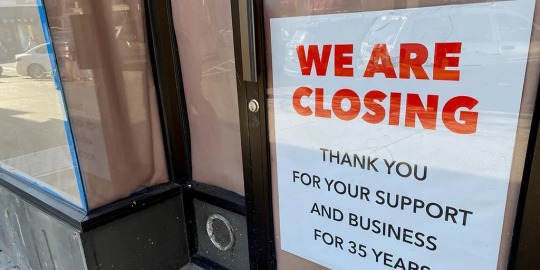
Why Supporting Local Businesses Matters More Than Ever
In today’s fast-paced, digitally-driven world, supporting local businesses has never been more crucial. As large corporations and e-commerce giants continue to dominate the market, the survival and prosperity of small, local businesses are at risk. However, the significance of these local enterprises extends far beyond their products and services—they are the lifeblood of our communities. DASH Shop recognizes this and is dedicated to fostering economic sustainability through its innovative platform, designed to uplift and empower local businesses.
Economic Benefits: The Ripple Effect of Supporting Local
Supporting local businesses has a profound economic impact that resonates throughout the community. When you shop locally, a larger portion of your money stays within the community, creating a multiplier effect. Local businesses tend to source their supplies locally, use local services, and reinvest their profits within the community. This not only boosts the local economy but also creates job opportunities, contributing to a lower unemployment rate.
Small businesses are also more likely to offer unique and diverse products, enhancing consumer choice and fostering innovation. By supporting these businesses, we encourage entrepreneurship and the development of new ideas, which can lead to broader economic growth and resilience.
Strengthening Community Ties
Local businesses are integral to the social fabric of our communities. They are not just places to buy goods and services; they are gathering spots where people connect, share stories, and build relationships. These interactions foster a sense of belonging and community spirit that is often missing in large, impersonal retail chains.
Local business owners are typically more engaged in their communities, participating in local events, supporting local causes, and contributing to community development. Their involvement helps to create a more vibrant, cohesive community where people feel more connected and invested in their surroundings.
How DASH Shop Facilitates Local Support
DASH Shop is committed to making it easier for consumers to support local businesses while enjoying the convenience of modern technology. Here’s how DASH Shop facilitates this support:
1. Connecting Customers with Local Retailers
DASH Shop’s platform connects consumers with a wide range of local retailers, allowing them to shop from the comfort of their homes while still supporting their community. The platform
features an extensive selection of products from local stores, ensuring that customers have access to unique and high-quality items that they might not find elsewhere.
2. Promoting Instant Delivery
DASH Shop understands that convenience is a significant factor in modern shopping habits. By offering instant delivery services, the platform ensures that customers can enjoy the speed and convenience of online shopping while supporting local businesses. This service is particularly beneficial in today's fast-paced environment, where time is often a scarce resource.
3. Enhancing Visibility for Local Businesses
One of the main challenges for local businesses is visibility. DASH Shop addresses this by providing a robust online presence for local retailers, making it easier for them to reach a broader audience. The platform’s user-friendly interface and comprehensive search features enable consumers to discover new local businesses and products effortlessly.
4. Building a Community-Centric Brand
DASH Shop positions itself as a community-focused brand, dedicated to the economic sustainability of local businesses. By highlighting the stories and products of local retailers, DASH Shop fosters a deeper connection between consumers and businesses. This approach not only boosts sales for local businesses but also strengthens the community as a whole.
Conclusion: A Call to Action
Supporting local businesses is more than just a purchase decision; it’s an investment in our communities and our future. By choosing to shop locally, we contribute to the economic vitality, social cohesion, and overall well-being of our communities. DASH Shop is at the forefront of this movement, providing the tools and platform necessary to make supporting local businesses easier and more convenient than ever.
Let’s embrace the opportunity to support our local businesses and, in turn, build stronger, more resilient communities. Together, with DASH Shop, we can make a difference, one purchase at a time.
#delivery#localretail#retail#accounting#adidas#alexander mcqueen#animation#artificial intelligence#artists on tumblr#artwork#dashshop#local#local retail
4 notes
·
View notes
Text
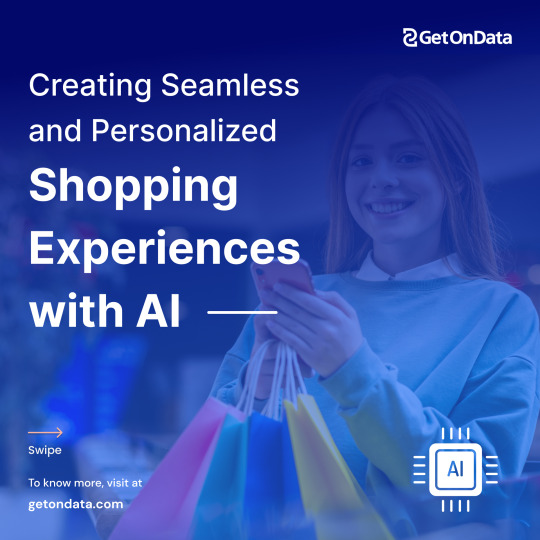
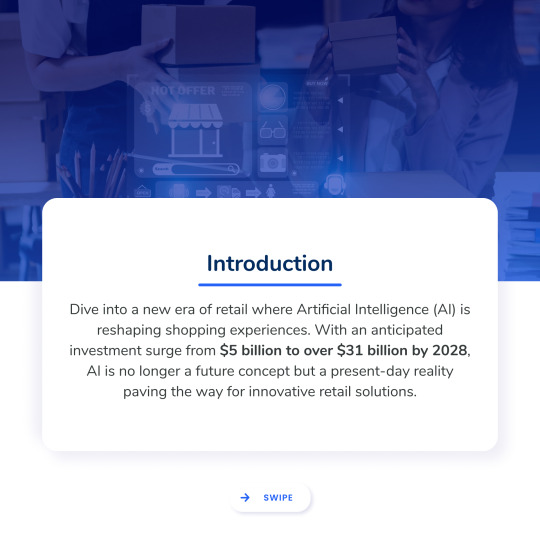
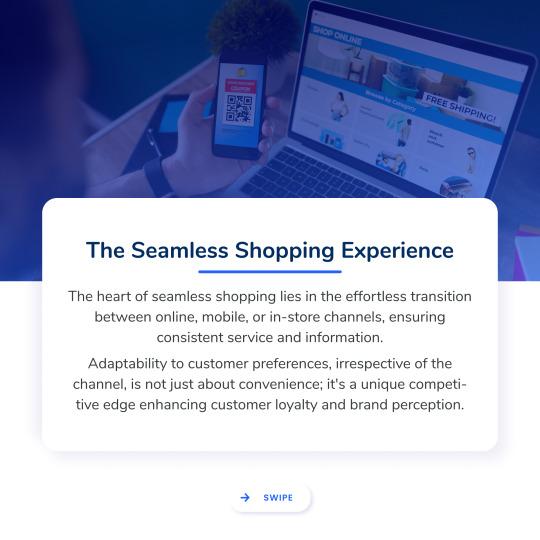
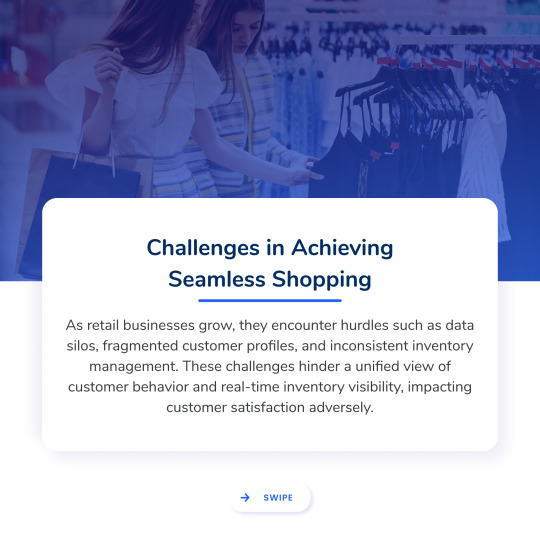
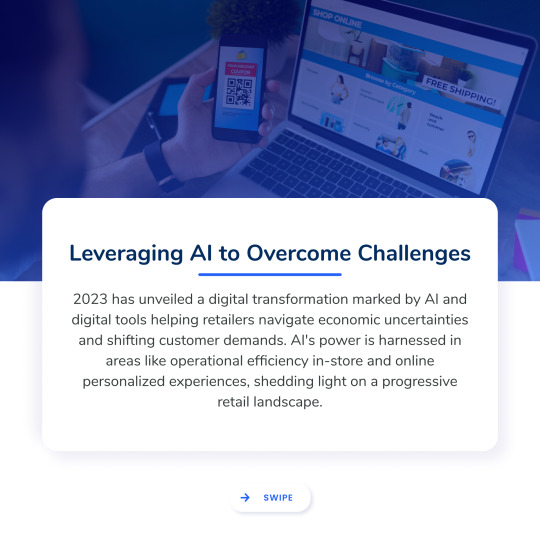
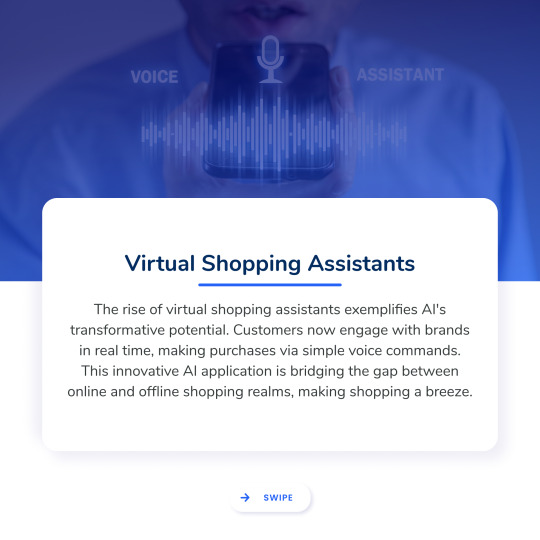

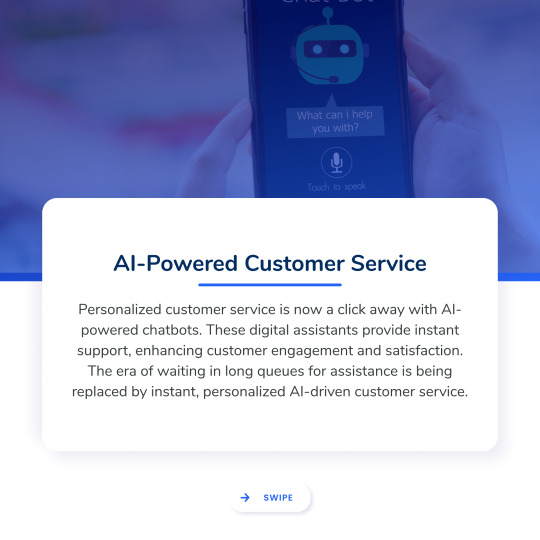

Discover a new era of shopping where every step feels like it’s tailored just for you. 🛍️ Dive deeper into a world where shopping meets simplicity and personalization effortlessly. Watch our latest webinar to unlock the magic behind creating smooth and uniquely tailored shopping journeys. For a richer understanding and a peek into this revolution, hit play on our webinar. To learn more, click the link below! 🎥
#retail#artificial intelligence#ai#customer experience#cx#shopping#omnichannel#customerengagement#retail technology#webinar#getondata
3 notes
·
View notes
Text
Transforming Online Retail with Advanced Product Visualisation
In today’s highly competitive e-commerce landscape, product visualization has emerged as a game-changer, reshaping how customers interact with products before making a purchase. Tools like Zolak product visualisation platform are leading this transformation by offering immersive, real-time 3D and augmented reality (AR) experiences that significantly improve buyer confidence and satisfaction.
Traditional product images and descriptions no longer suffice in meeting the expectations of modern online shoppers. Customers now demand more engaging and informative content that replicates the in-store experience. High-quality 3D visualization allows shoppers to interact with a product — rotate it, zoom in, change colors, and even place it in their own environment using AR. This hands-on digital interaction helps bridge the gap between virtual browsing and physical shopping.
For furniture, home décor, and other customization-heavy industries, product visualisation isn’t just a novelty — it’s a necessity. Platforms like Zolak offer retailers the ability to show their products in rich detail, enable dynamic configuration (such as fabric, size, or finish changes), and generate lifestyle imagery without the need for physical photoshoots. This reduces both marketing costs and time-to-market.
More importantly, product visualisation increases consumer trust. When buyers can accurately see how a product looks and fits into their space, they make better purchasing decisions. This leads to fewer returns, higher customer satisfaction, and increased conversion rates — key metrics for any online retailer.
Beyond improving the customer journey, advanced visualization tools integrate easily into most e-commerce platforms and can be scaled across thousands of SKUs. With innovations like AI-powered room planners and automated content generation, companies are not only enhancing user experience but also streamlining operations behind the scenes.
In summary, product visualisation is no longer optional — it’s essential for e-commerce growth. As technologies evolve, platforms like Zolak are setting a new standard in how products are presented online. For retailers looking to stay competitive and meet the rising demands of digital consumers, adopting a robust product visualisation strategy is a smart and necessary move.
0 notes
Text

Discover Your Perfect Strain Match with Genetica
Genetica takes the guesswork out of choosing which strains will best suit your needs. Powered by artificial intelligence in retail, our platform personalizes recommendations based on your unique preferences and goals. Take the first step in finding the perfect strains for you by completing this brief survey. Be among the first to experience a smarter, data-driven way to shop for cannabis with Genetica.
#cannabis retail#artificial intelligence platform#retail ai#flora ai#cannabis ai#artificial intelligence in retail#ai in retail
1 note
·
View note
Text
#artificial intelligence#ai agents#technology#business#healtcare#retail#b2bmarketplaces#ai agent development#ai agent deployment#supply chain management
0 notes
Text
AI Is Changing the Way We Shop Online
Discover how AI is changing the way we shop online. Explore how artificial intelligence improves personalization, convenience, and customer experiences in e-commerce.. Artificial Intelligence (AI) is transforming the way we shop online. From personalized product recommendations to virtual assistants, AI is making online shopping faster, smarter, and more tailored to individual preferences.…
#ai#AI Shopping#Artificial Intelligence#artificial-intelligence#business#Digital Retail#digital-marketing#e-commerce#marketing#Online Shopping#Personalized Experience#Retail Technology#Shopping Trends#Smart Shopping
1 note
·
View note
Text
Retail Assortment Management Applications: Transforming Merchandising for the Modern Retailer
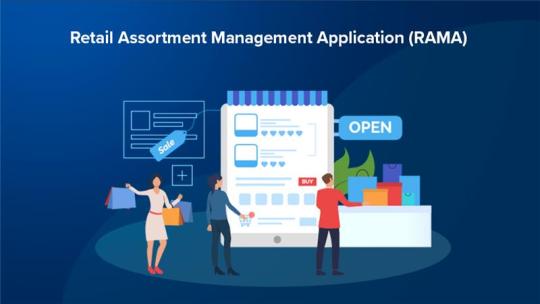
View On WordPress
#ai#artificial intelligence#assortment management#assortment planning#assortment strategy#business#Business Intelligence#Information Technology#Machine Learning#RAMA#Retail#retail assortment#Retail Assortment Management#Retail Assortment Management Application#Retail Assortment Management Application (RAMA)#retail assortment planning#Retail technology
0 notes
Text
Understanding the Dynamics of the Artificial Intelligence in Retail Market
According to a recent report by Grand View Research, Inc., the global artificial intelligence (AI) in retail market is projected to reach a value of USD 40.74 billion by the year 2030. This significant growth is expected to occur at a compound annual growth rate (CAGR) of 23.0% during the forecast period spanning from 2025 to 2030. The market’s expansion is largely being driven by the increasing integration of cutting-edge technologies such as chatbots, voice recognition systems, and other AI-powered solutions. These innovations are enhancing customer interaction and operational efficiency within the retail sector, thereby boosting the overall growth potential of AI in retail.
Furthermore, the ongoing surge in online retail sales is accelerating the adoption of AI solutions as retailers aim to improve customer experiences and remain competitive in a rapidly evolving digital landscape. Retailers are increasingly focusing on personalized shopping experiences, precision-targeted marketing, and optimized operational workflows—all of which are being powered by AI. This focus is also supported by rising investments in AI research and deployment, along with favorable government regulations aimed at encouraging digital innovation in retail environments.
AI algorithms have become essential in processing and analyzing large volumes of consumer data collected through various digital touchpoints. These algorithms can assess patterns in online behavior to deliver insights that help retailers tailor their services to individual preferences. In addition, the adoption of AI-driven image and video analytics is gaining traction, particularly for the purpose of classifying and filtering visual content. This capability is proving useful in areas such as product categorization, inventory management, and targeted advertising, which in turn is stimulating further investments in AI technologies across both developed and emerging markets.
The use of AI in retail has proven effective in delivering superior customer engagement and operational outcomes, especially in virtual environments. These benefits are expected to further increase the demand for AI applications in the retail sector in the years ahead. A notable example includes Google LLC’s launch of "Product Discovery Solutions for Retail" in January 2021. This offering comprises a suite of services designed to enhance the e-commerce capabilities of retailers and deliver highly personalized experiences to consumers by leveraging AI technologies.
Among the various segments of the AI in retail market, image and video analytics are anticipated to capture a significant market share during the forecast period. This growth is attributed in part to the rising use of in-store promotional tools and the increased application of visual search technologies. For example, eBay has integrated AI to refine image-based searches, strengthen buyer-seller trust, and improve shipping efficiency. Similarly, Amazon is actively using AI to expand its visual search capabilities, implement facial recognition, and enhance customer service through automation.
The virtual assistant segment is also expected to make a substantial contribution to the overall market growth. This trend is fueled by the increasing prevalence of voice-activated search functions and the rising consumer demand for personalized shopping experiences. Intelligent virtual assistants are transforming how retailers interact with their customers, enabling real-time query resolution and streamlining the overall customer support experience.
Key players in the AI in retail market are consistently investing in innovative technologies and strategic initiatives to stay ahead in a competitive landscape. These efforts are focused on developing advanced customer targeting tools and delivering customized solutions that align with individual consumer behaviors. For instance, in August 2020, Kenco, a U.S.-based logistics provider, introduced DaVinci AI—a platform designed to generate predictive insights and enable prescriptive actions to optimize supply chain management and performance.
Curious about the Artificial Intelligence In Retail Market? Get a FREE sample copy of the full report and gain valuable insights.
The FAQs about the Artificial Intelligence In Retail Market highlight its size, growth rate, key players, and technological segments.
1. How is AI used to enhance customer experiences in retail?
AI is utilized to create personalized shopping experiences through recommendation engines that analyze customer preferences and browsing history. Retailers employ chatbots for instant customer support, and virtual try-on solutions help customers visualize products before purchase, improving engagement and satisfaction.
2. What are the benefits of implementing AI in retail?
• Personalization: Tailored shopping experiences based on individual consumer data.
• Efficiency: Streamlined operations leading to cost savings and reduced manual errors.
• Demand Forecasting: Accurate predictions of inventory needs to avoid stockouts or overstocking.
• Dynamic Pricing: Adjusting prices in real-time based on demand, competition, and other factors.
3. What challenges do retailers face when adopting AI technologies?
• Data Privacy: Ensuring consumer data is handled securely and ethically.
• Integration Issues: Difficulties in integrating AI solutions with existing systems.
• Skill Gaps: Limited in-house expertise to effectively implement and manage AI systems.
• Cost: High initial investment costs for successful AI adoption.
4. What is the future of AI in the retail industry?
The future of AI in retail is set towards hyper-personalization, autonomous shopping experiences, enhanced supply chain management, and continuous improvements in customer data analysis. As AI technologies advance, retailers will increasingly rely on these tools to stay competitive and meet evolving consumer demands.
5. Are there particular AI applications that are gaining traction in retail?
Yes, several AI applications are becoming prominent in retail:
• Chatbots for customer support and query handling.
• Predictive analytics for demand forecasting.
• Personalized marketing strategies based on consumer behavior.
• Computer vision technologies for automated checkouts and in-store analytics.
Order a free sample PDF of the Artificial Intelligence In Retail Market Intelligence Study, published by Grand View Research.
#Artificial Intelligence in Retail Market#Artificial Intelligence in Retail Market Size#Artificial Intelligence in Retail Market Share#Artificial Intelligence in Retail Market Analysis
0 notes